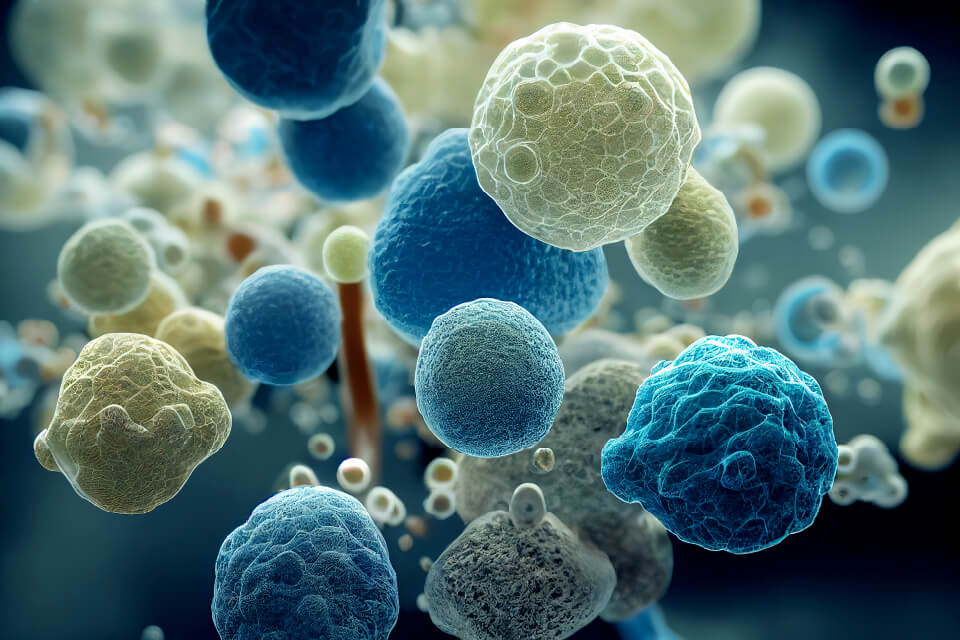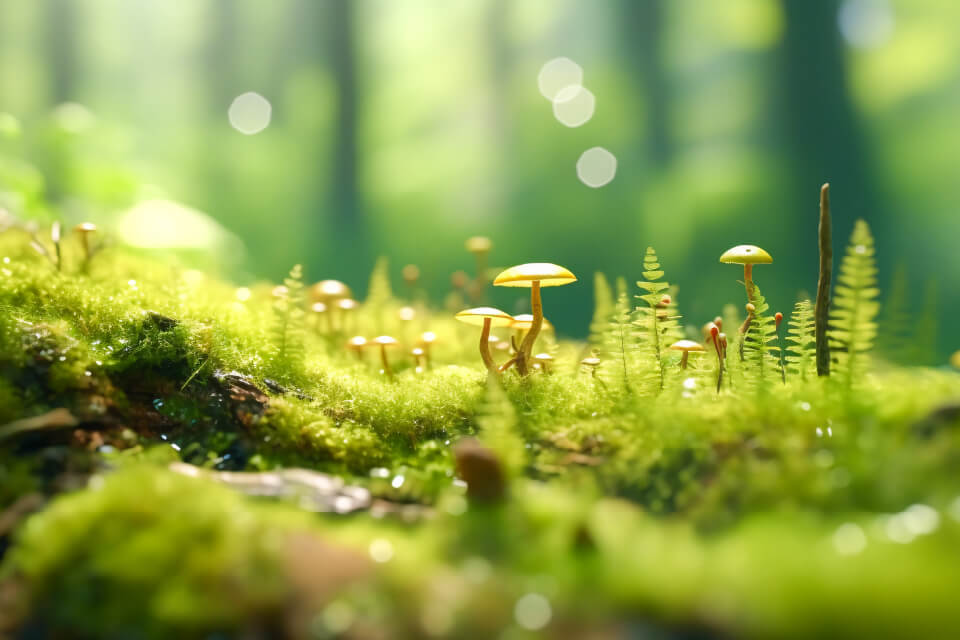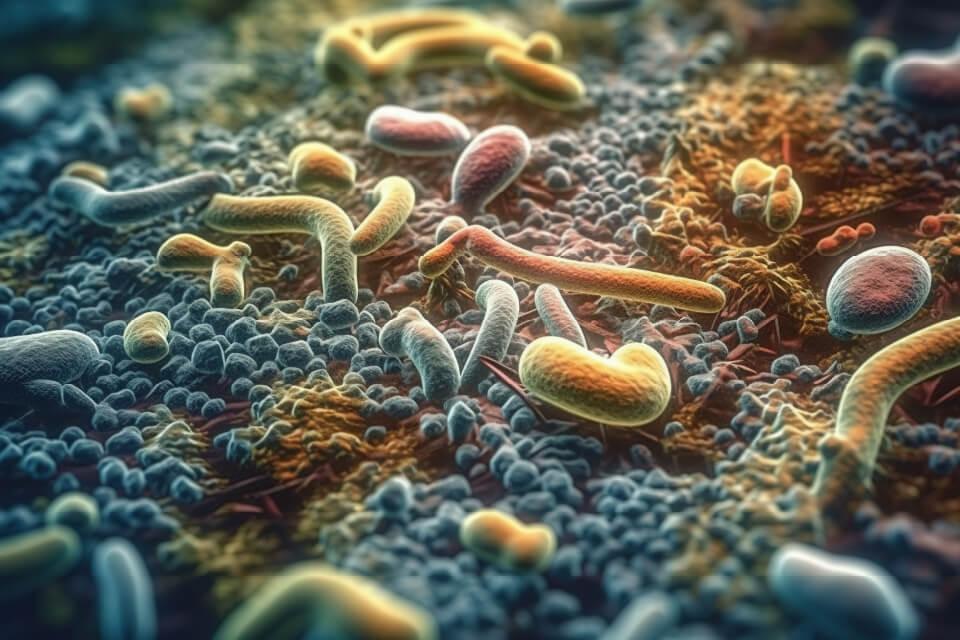About my research
Microbial community made by diverse microorganisms impacts on earth
Reactions that cannot proceed by a sole microorganism will proceed in cooperation with others
Microorganisms live in almost every environment on earth, creating a complex microbial community of thousands of species or more. Functions of the microorganisms in the community have a significant impact on the natural environments. For example, in some environments, plants grow well, and in others, pollutants are decomposed quickly. Our major goal is to understand and control the capabilities of these microbial communities, and to make them useful to society.
However, it is very challenging to understand the complex microbial community composed of more than thousands of species. For example, the performance of wastewater treatment systems for which microorganisms are responsible can suddenly decline or increase even under the same conditions. Since looks don't tell what is happening, we are using metagenomic and metatranscriptomic analysis to get a comprehensive picture of what microorganisms are doing what. As a result, we find key microorganisms and important reactions that can be used to improve the performance of environmental remediation.
Personally, I am particularly interested in the relationships among microorganisms and between microorganisms and plants/animals. Microorganisms can carry out reactions that they cannot perform on their own by cooperating with other microorganisms, and this cooperative relationship is sometimes the key to serve environmental functions. For example, we have found that microorganisms living in symbiosis with insects can decompose pesticides in cooperation with insects. If anyone is interested in this kind of unexpected cooperative relationship between living things, I would be happy to work with you!
Research
-
 Change waste to values by microbial capabilities
Microorganisms have been used for wastewater treatment. Wastewater treatment technologies have evolved, and now there are systems that can make valuables, such as energy, from wastewater. However, due to the complexity of the treatment systems in which thousands kinds of microbes are coexisting, to understand what is happening in the systems is challenging. By using metagenomics and metatranscriptomics, we have found key microbes that can determine the performance of the systems.
Change waste to values by microbial capabilities
Microorganisms have been used for wastewater treatment. Wastewater treatment technologies have evolved, and now there are systems that can make valuables, such as energy, from wastewater. However, due to the complexity of the treatment systems in which thousands kinds of microbes are coexisting, to understand what is happening in the systems is challenging. By using metagenomics and metatranscriptomics, we have found key microbes that can determine the performance of the systems.
- Key publications
- Sato et al., Water Res, 2021
- Sato et al., J Hazar Mater, 2022
-
 Interspecific interactions in ecosystem
Thousands of kinds of microbes are coexisting in natural environments and assembling microbial communities. For example, microbes in the community can cooperatively degrade falling leaves, dead insects, and even chemicals that cause environmental pollution. Such interactions and relationships between microbes are called interspecific interaction, by which functions of the microbial community and surrounding ecosystems are substantially affected. Sometimes, microbes proceed chemical reactions, which sole microbe cannot proceed, by cooperation with other microbes. To uncover such an interesting interaction would be one of pleasures of the scientific research.
Interspecific interactions in ecosystem
Thousands of kinds of microbes are coexisting in natural environments and assembling microbial communities. For example, microbes in the community can cooperatively degrade falling leaves, dead insects, and even chemicals that cause environmental pollution. Such interactions and relationships between microbes are called interspecific interaction, by which functions of the microbial community and surrounding ecosystems are substantially affected. Sometimes, microbes proceed chemical reactions, which sole microbe cannot proceed, by cooperation with other microbes. To uncover such an interesting interaction would be one of pleasures of the scientific research.
- Key publication
- Sato et al., Commun Biol, 2019
-
 Microbes and animals/plants
Microbes are living in our bodies as well. Today, human gut microbiome would be a popular example. Microbes in/on the animals and plants can benefit hosts by, for example, providing nutrients and energies, while some microbes cause diseases. We are investigating what the microbes living in the hosts are doing there and how the hosts are affected by microbial activities, particularly focusing on insects and plants as hosts. E.g., we have discovered interesting interaction between the insect and the symbiont bacterium, in which they are cooperatively detoxifying the insecticide.
Microbes and animals/plants
Microbes are living in our bodies as well. Today, human gut microbiome would be a popular example. Microbes in/on the animals and plants can benefit hosts by, for example, providing nutrients and energies, while some microbes cause diseases. We are investigating what the microbes living in the hosts are doing there and how the hosts are affected by microbial activities, particularly focusing on insects and plants as hosts. E.g., we have discovered interesting interaction between the insect and the symbiont bacterium, in which they are cooperatively detoxifying the insecticide.
- Key publication
- Sato et al., Nat Commun, 2021